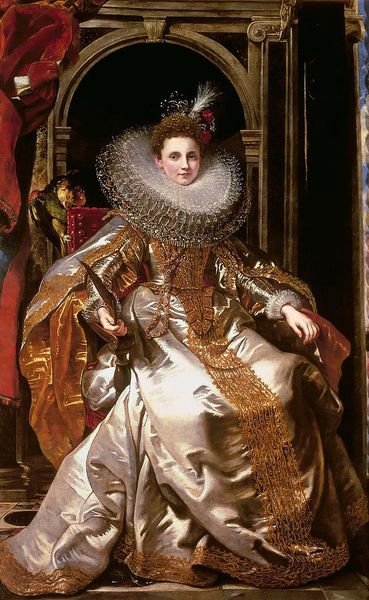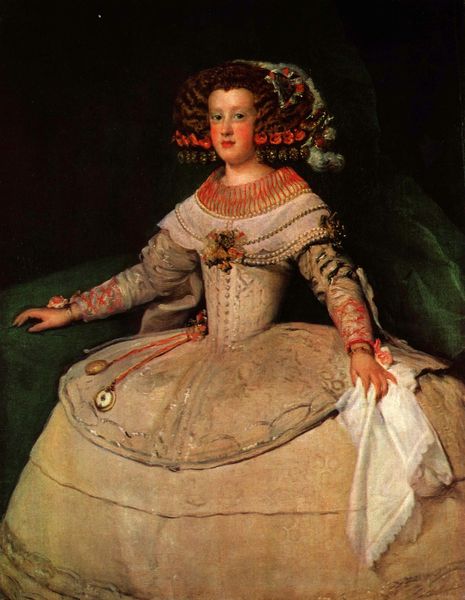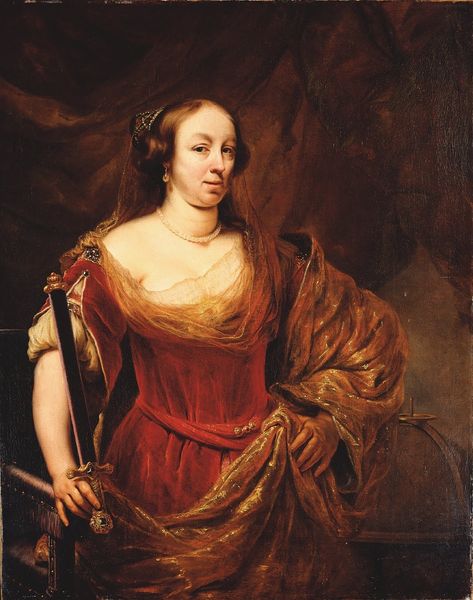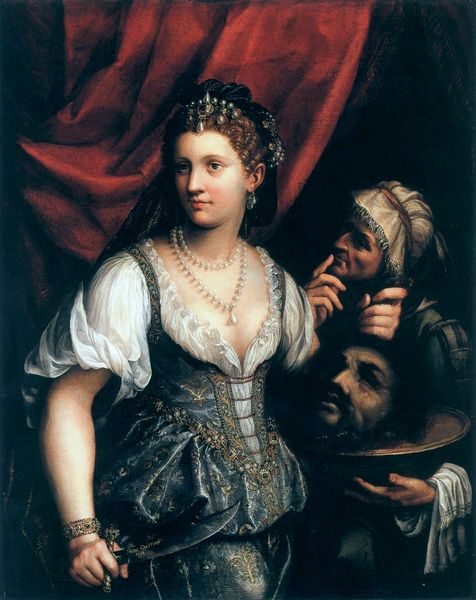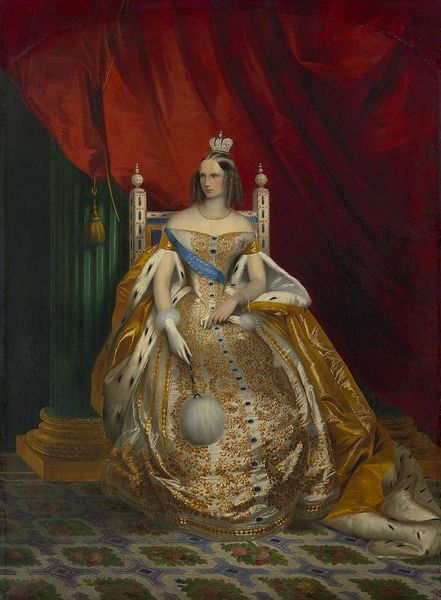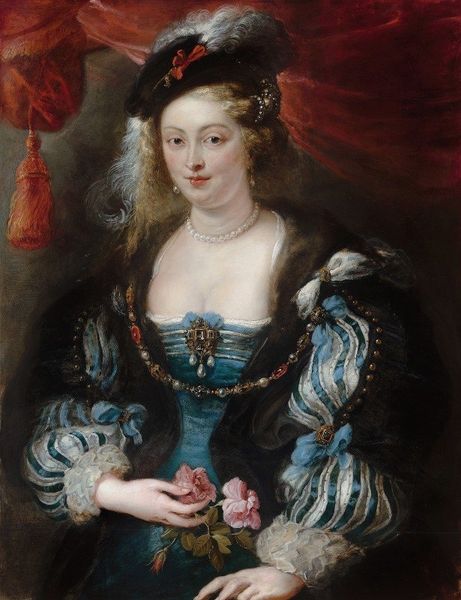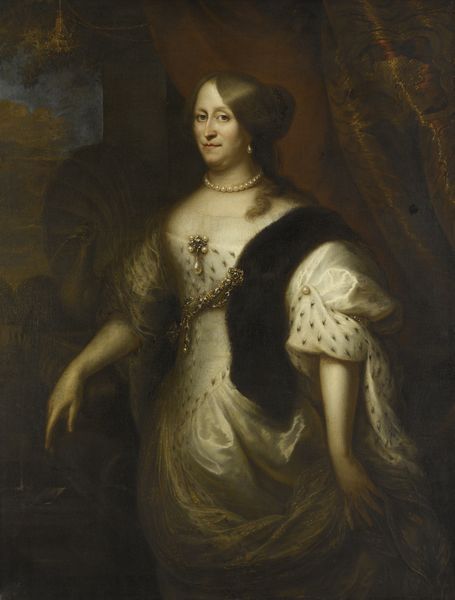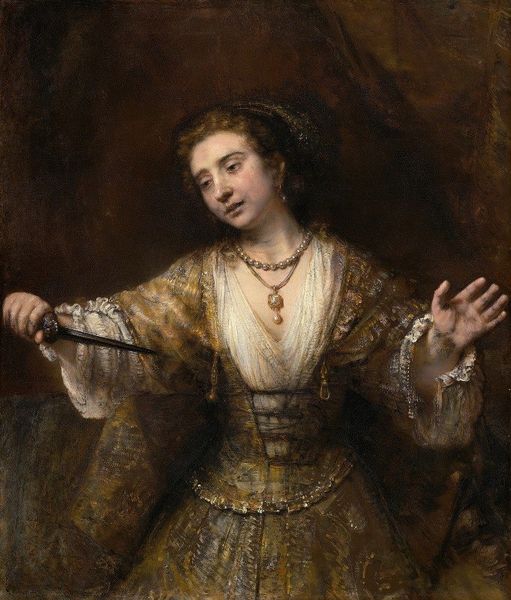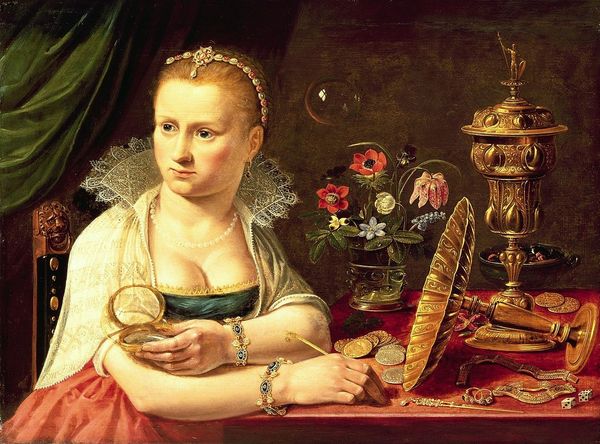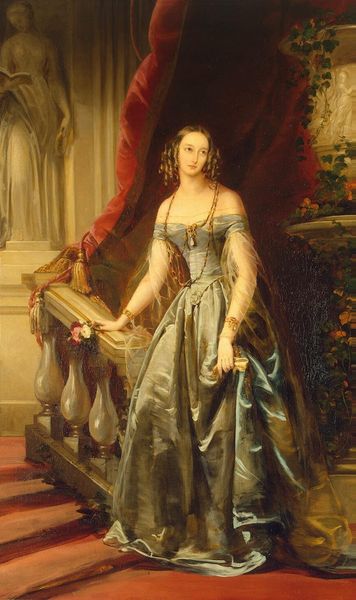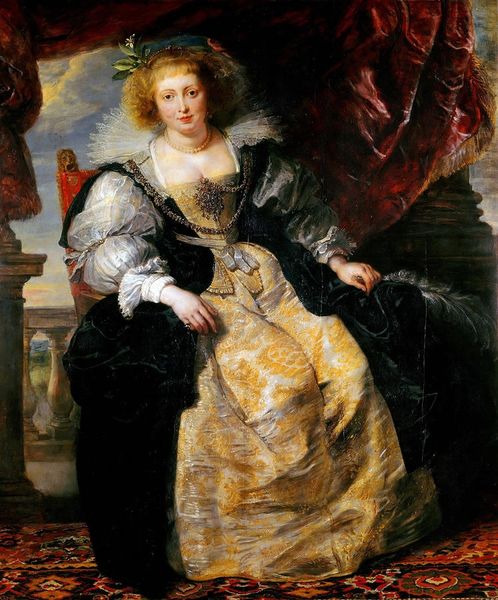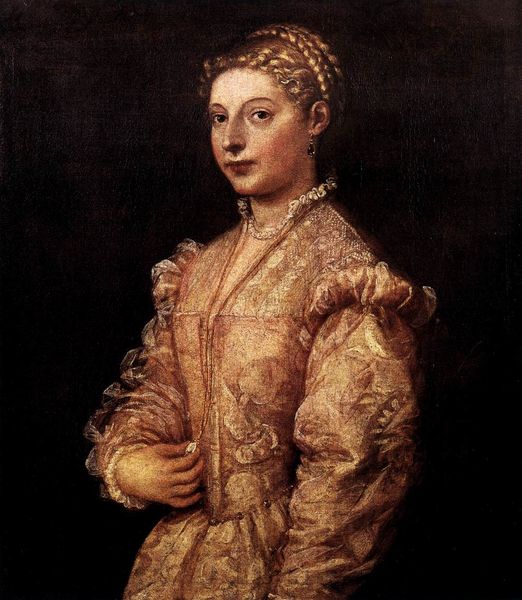
painting, oil-paint
#
portrait
#
baroque
#
fantasy art
#
dutch-golden-age
#
painting
#
oil-paint
#
costume
#
mythology
#
history-painting
Copyright: Public Domain: Artvee
Rembrandt van Rijn painted this image of Juno, queen of the gods, likely in the 1660s, using oils. In the Dutch Republic of this time, the art market was booming. Artists like Rembrandt responded to a demand from middle-class patrons for portraits, genre scenes, landscapes, and even history paintings in a reduced format. The artist has rendered the mythological queen Juno as an approachable, matronly figure, richly adorned in jewelry and a crown. Rembrandt drew inspiration from classical antiquity, but reinterpreted his sources to suit the tastes of the time. Unlike the idealized nudes of the Italian Renaissance, Juno is a domestic goddess for a northern European audience. To understand this image better, we need to do more research into the literary and theatrical sources that inspired Rembrandt, and consider how his interpretation compares to earlier depictions of the goddess. The meaning of art is always contingent on its social and institutional context.
Comments
No comments
Be the first to comment and join the conversation on the ultimate creative platform.
